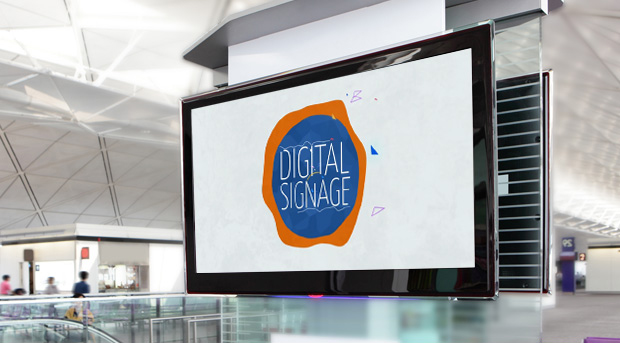WHAT IS DIGITAL SIGNAGE?
 That’s a great question! There’s been a lot of discussion about the meaning of the term and even if the name itself is even the right one, but there’s no question that it’s everywhere. You can’t drive down the road, walk into a restaurant, head to an airport, even go a school anymore without seeing digital signage. Because it’s everywhere, the name is a catch-all for all kinds of different technology being used in lots of different ways for different purposes. Here’s the very dry Wikipedia version:
That’s a great question! There’s been a lot of discussion about the meaning of the term and even if the name itself is even the right one, but there’s no question that it’s everywhere. You can’t drive down the road, walk into a restaurant, head to an airport, even go a school anymore without seeing digital signage. Because it’s everywhere, the name is a catch-all for all kinds of different technology being used in lots of different ways for different purposes. Here’s the very dry Wikipedia version:
Digital signage is a sub-segment of signage. Digital signs use technologies such as LCD, LED and Projection to display content such as digital images, video, streaming media, and information. They can be found in public spaces, transportation systems, museums, stadiums, retail stores, hotels, restaurants, and corporate buildings etc, to provide wayfinding, exhibitions, marketing and outdoor advertising.
So, in summary, it’s any size screen displaying any type of content for any reason. That’s an incredibly broad description and one of the main reasons that the average person looking to install a digital signage network can get easily confused. The other key reason for confusion, of course, is the huge number of vendors to choose from, which is why there’s a “Top 25 Digital Signage Software Vendors List” instead of just 3 or 4 obvious choices.
So what’s the best way of navigating this mess and selecting a list of vendors to contact?
IDENTIFYING YOUR NEEDS
The first question we ask our customers – and the one that they often struggle to answer – is “what is the ideal result once your deploy your digital signage network?” This is the first step in identifying a potential customer’s goals, or lack thereof, and we go a little deeper with a few more questions:
- How many screens are you looking to deploy?
- What’s the timeline of deployment?
- What’s your content strategy?
- Do you have a budget?
After conducting this exploration process we tend to either quickly move to a demonstration of our capabilities or the potential customer decides they have homework to do. Either scenario is a good one. If you’ve got a clear understanding of the intent and the resources required to make your network a successful one, it’s time to get some screens and get your feet wet. If you don’t, it’s far better to take a step back and think it through instead of falling into the trap that many people do: buying screens, hanging them up and spend months trying to figure out what to do with them.
DETERMINING THE SELECTION CRITERIA FOR TECHNOLOGY
So, you’ve got a budget, a plan and the resources necessary to make your network successful.
Or do you?
The good news is that the costs for procurement and installation of a network have come down considerably in recent years, so you’ll likely be able to quickly figure out the hard costs. The soft costs are much more difficult to determine because the services vary so widely in what’s offered and the business models that they represent. The easiest way to think about this is to look at the two largest ongoing costs of the network: content creation and network management.
Content creation costs vary widely based on the purpose of the network, the quality required and the frequency of change. Here a few categories of deployment, ranging from simple to complex:
- Single-screen, automated content – news, sports, weather, FIDS, etc.
- Menu boards
- Public facing boards in a corporation
- Wayfinding screens in a mall
- Videowall in a major retailer
Determining the application, the quality and frequency of change will give you a rough idea to your ongoing content creation costs.

No Comment